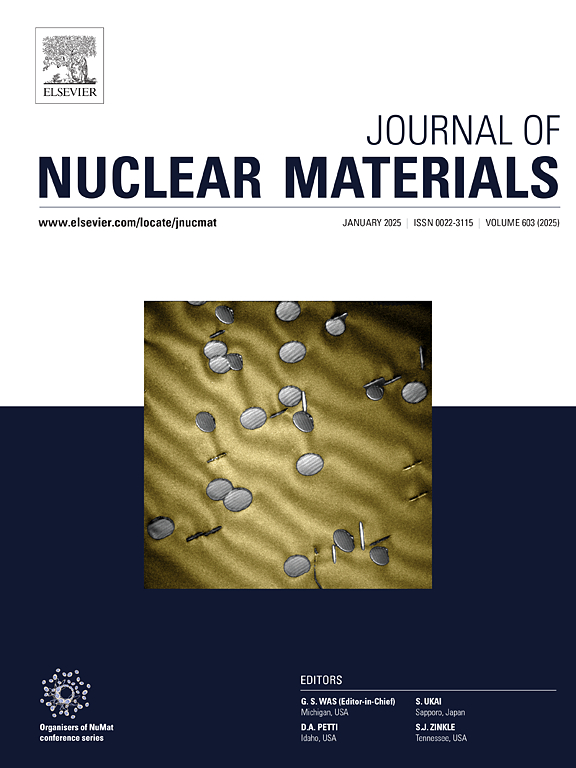Utralow coefficient of thermal expansion in a spheroidized natural flake graphite based isotropic graphite
IF 2.8
2区 工程技术
Q3 MATERIALS SCIENCE, MULTIDISCIPLINARY
引用次数: 0
Abstract
With the development of high-temperature gas-cooled reactors, the coefficient of thermal expansion (CTE) of nuclear-grade graphite plays an increasingly important role in reactor design. A lower CTE enhances both the integrity of the graphite core structure and reactor efficiency. In this paper, we present a new isotropic graphite grade with a low CTE, utilizing spheroidized natural flake graphite (SFG) as a filler material. The ultralow isotropic CTE of 2.6–2.9 × 10−6 K−1 in the SFG-based graphite, owing to the ability of the slit-shaped pores within the SFG particles to accommodate cross-plane thermal expansion. To enhance the baking performance of the SFG-based graphite, hybrid fillers of SFG/coke or SFG/microcrystalline graphite (MG) were used to prevent cracking of the green bodies. In particular, the addition of MG prevents cracking without changing the low CTE value of the SFG-based graphite. This research contributes to the development of new graphite materials with low CTE that can be used in nuclear engineering, the semiconductor industry, and other high-temperature environments.
求助全文
约1分钟内获得全文
求助全文
来源期刊

Journal of Nuclear Materials
工程技术-材料科学:综合
CiteScore
5.70
自引率
25.80%
发文量
601
审稿时长
63 days
期刊介绍:
The Journal of Nuclear Materials publishes high quality papers in materials research for nuclear applications, primarily fission reactors, fusion reactors, and similar environments including radiation areas of charged particle accelerators. Both original research and critical review papers covering experimental, theoretical, and computational aspects of either fundamental or applied nature are welcome.
The breadth of the field is such that a wide range of processes and properties in the field of materials science and engineering is of interest to the readership, spanning atom-scale processes, microstructures, thermodynamics, mechanical properties, physical properties, and corrosion, for example.
Topics covered by JNM
Fission reactor materials, including fuels, cladding, core structures, pressure vessels, coolant interactions with materials, moderator and control components, fission product behavior.
Materials aspects of the entire fuel cycle.
Materials aspects of the actinides and their compounds.
Performance of nuclear waste materials; materials aspects of the immobilization of wastes.
Fusion reactor materials, including first walls, blankets, insulators and magnets.
Neutron and charged particle radiation effects in materials, including defects, transmutations, microstructures, phase changes and macroscopic properties.
Interaction of plasmas, ion beams, electron beams and electromagnetic radiation with materials relevant to nuclear systems.
 求助内容:
求助内容: 应助结果提醒方式:
应助结果提醒方式:


